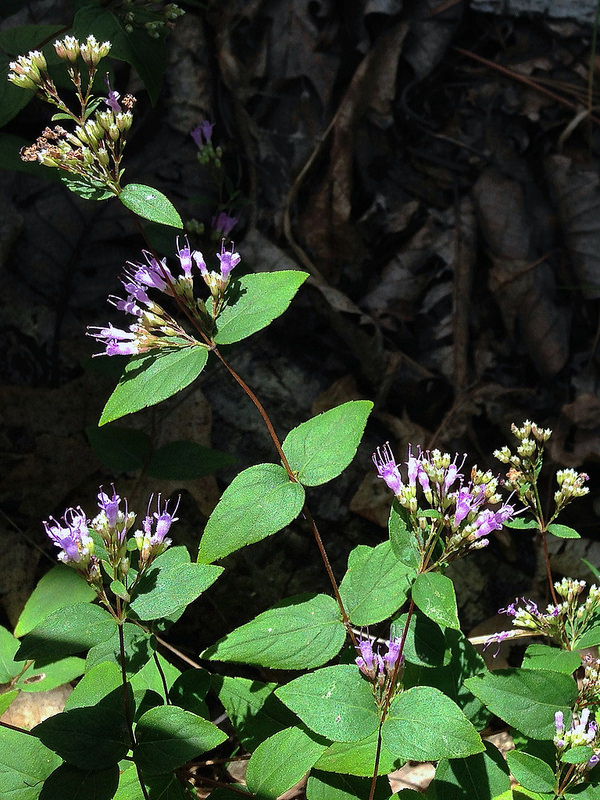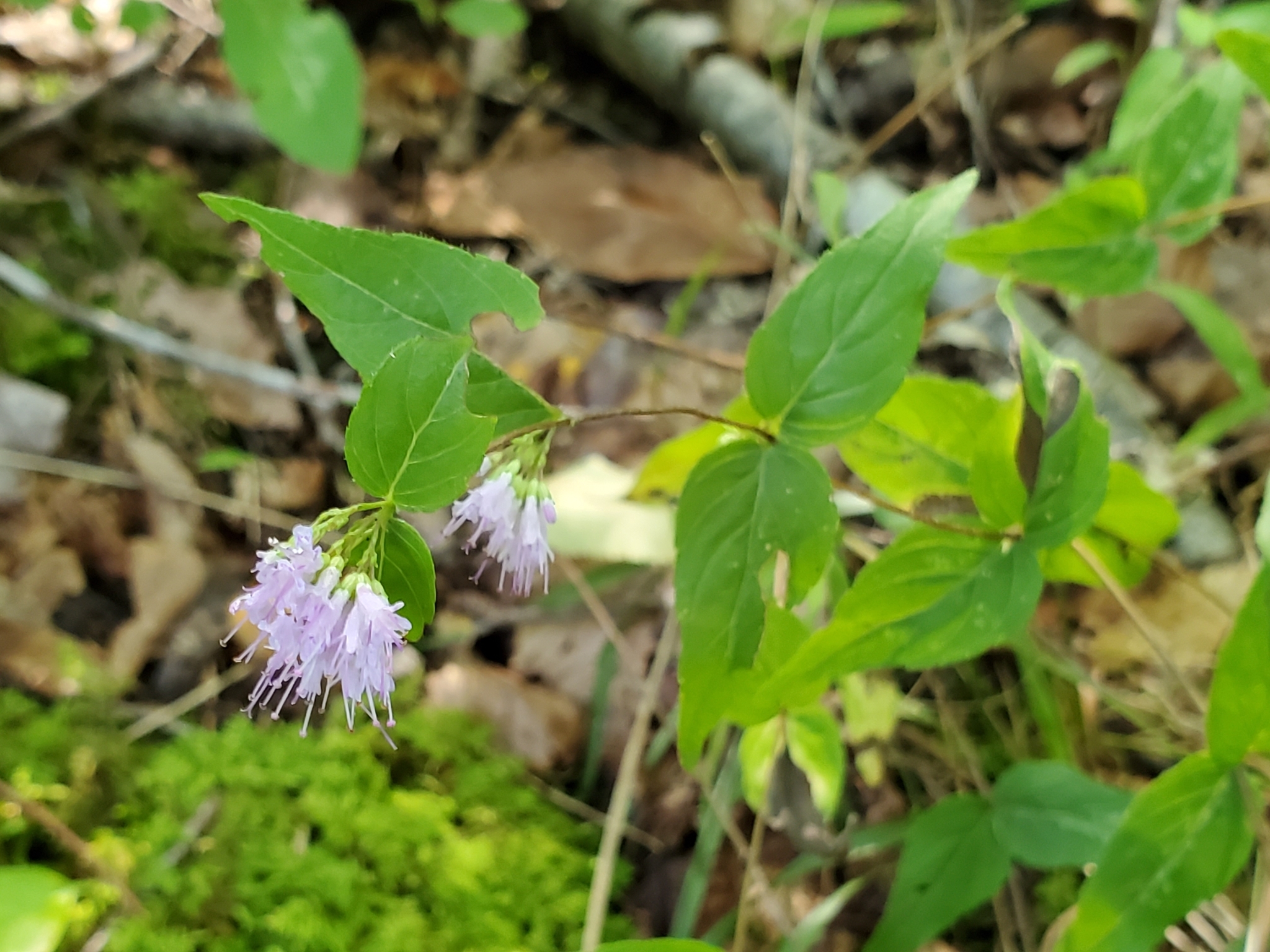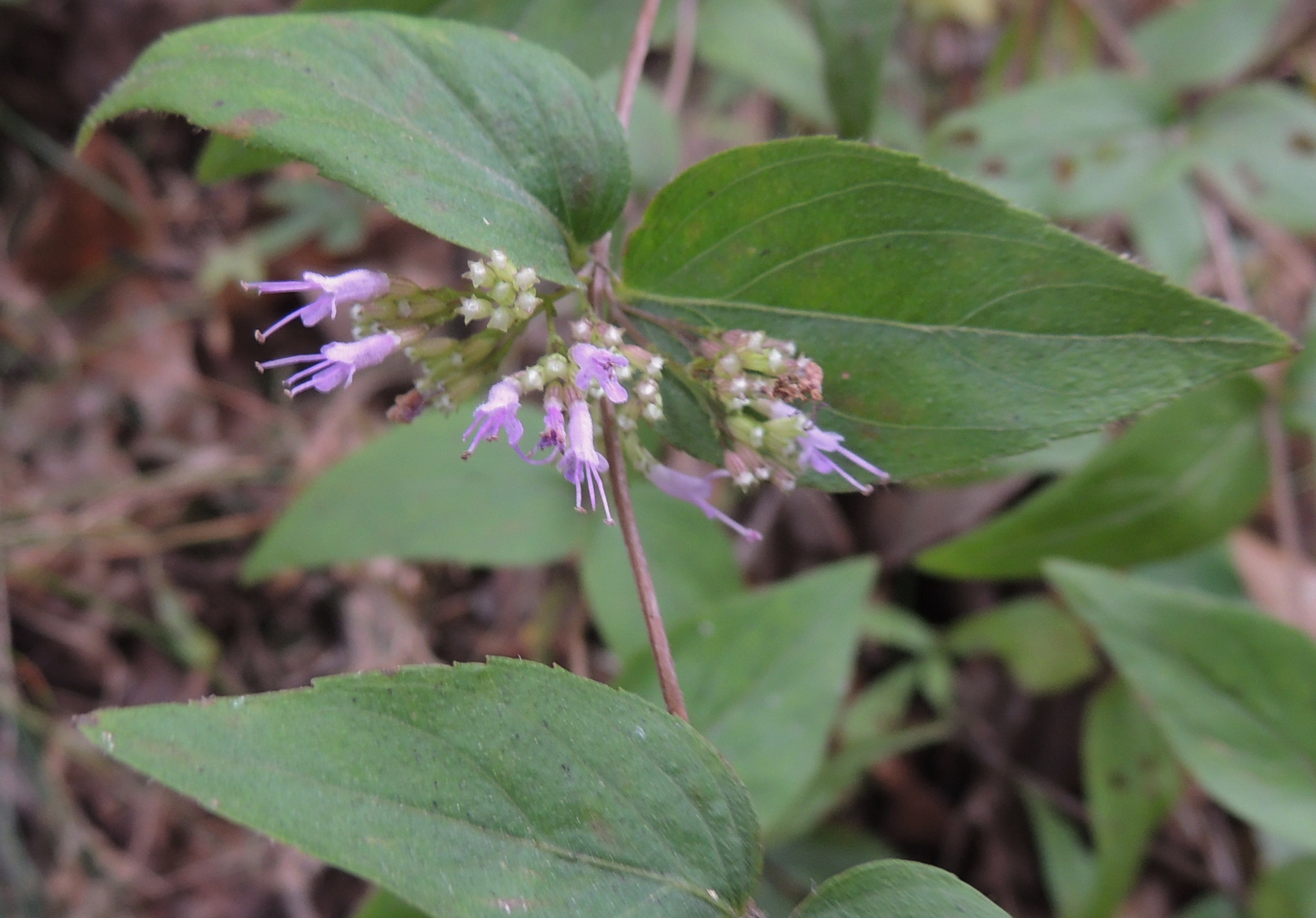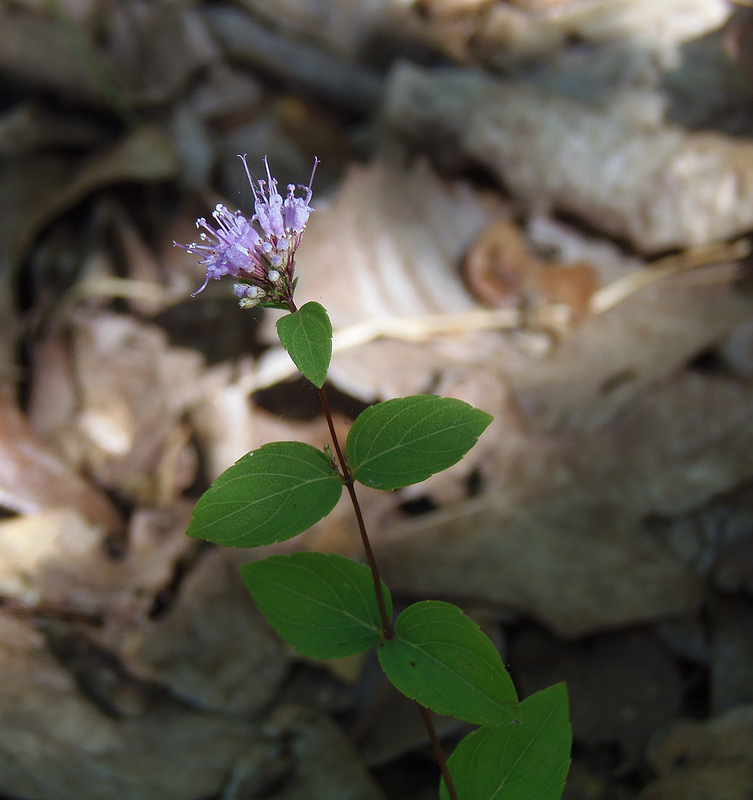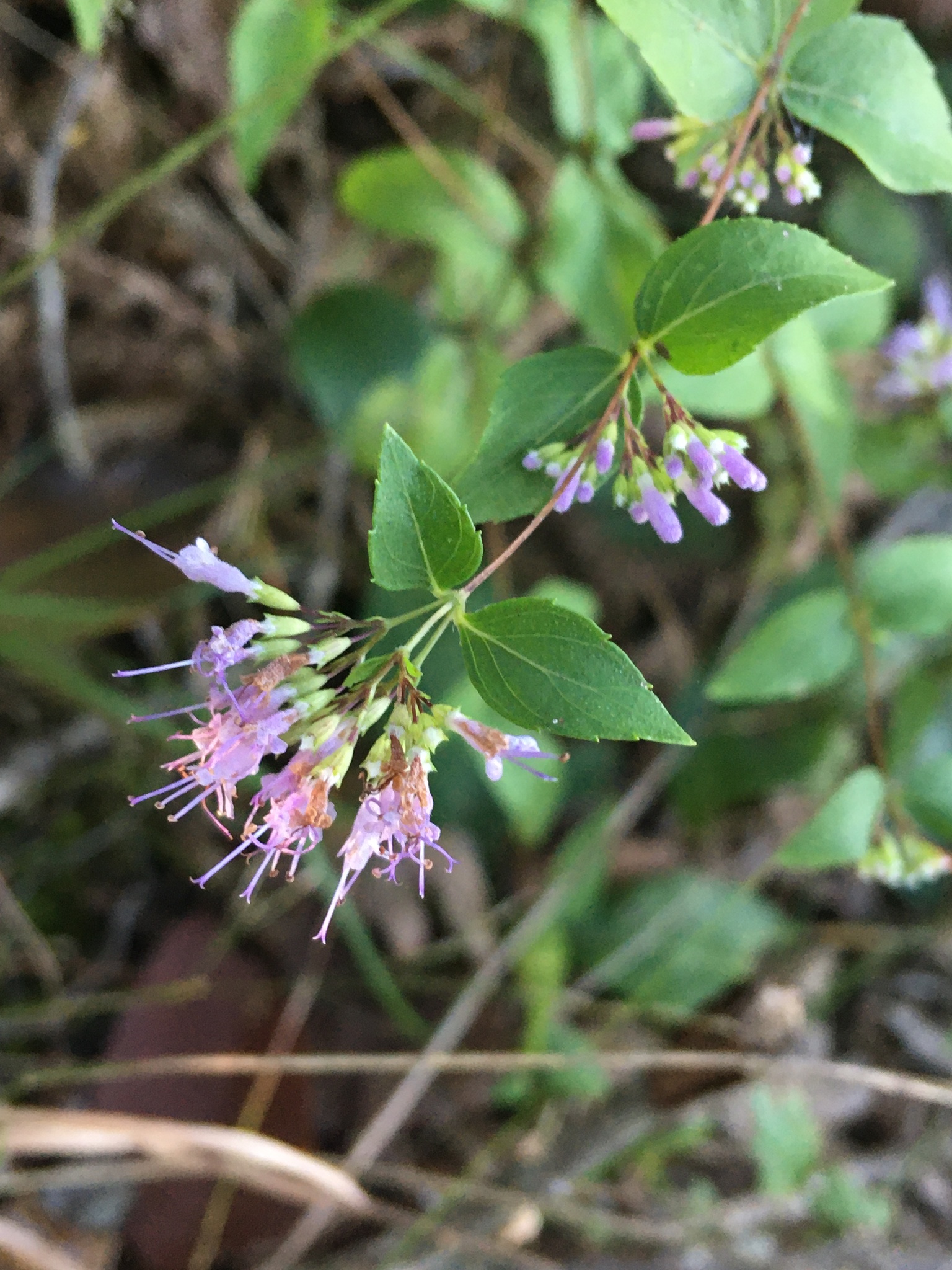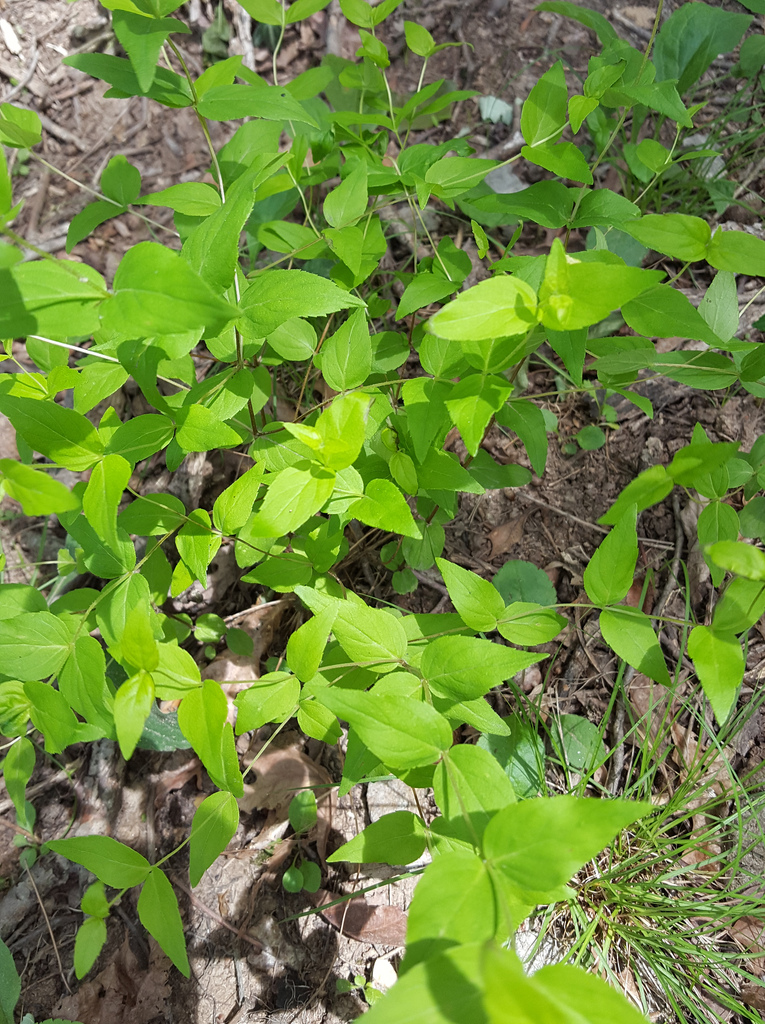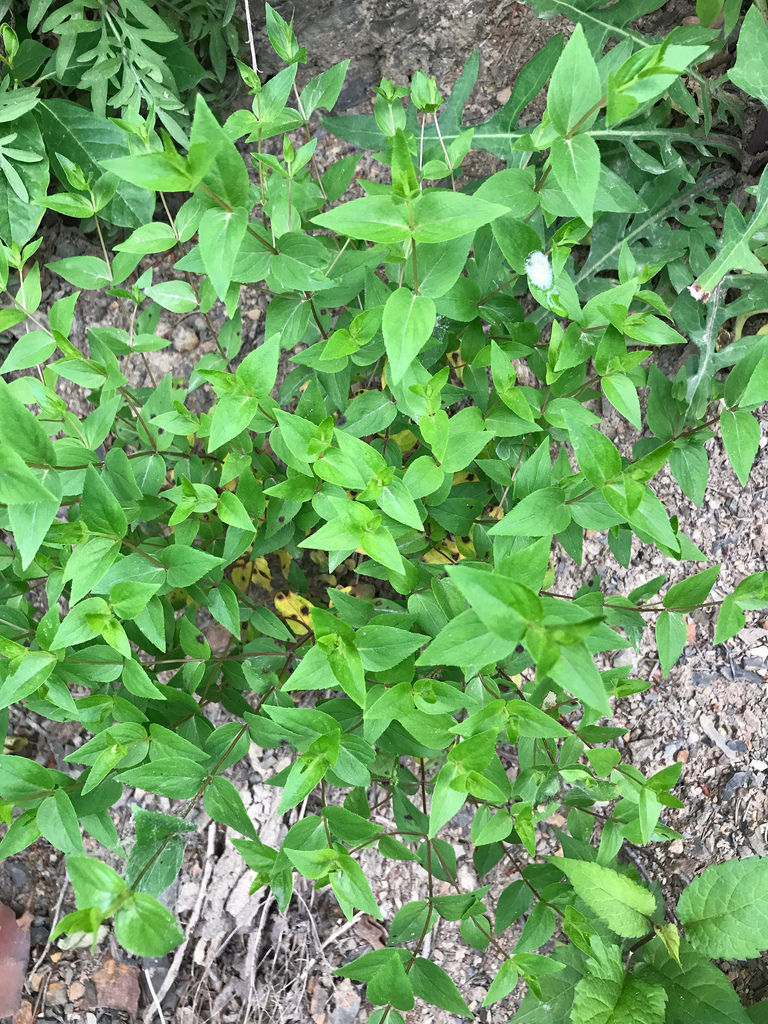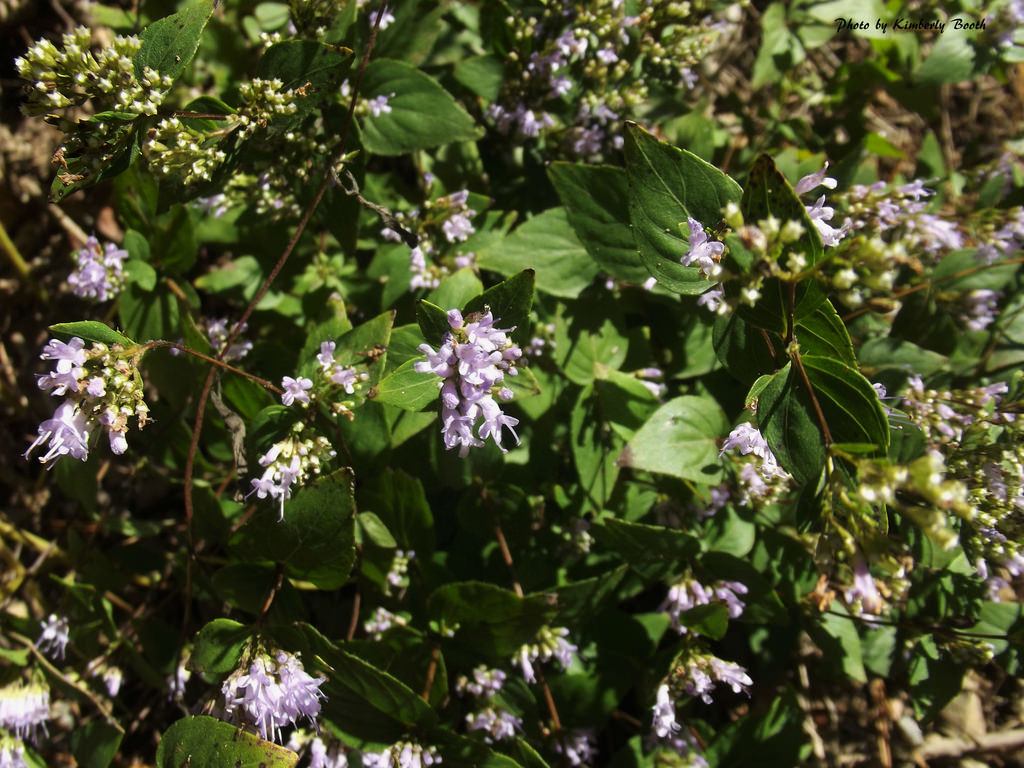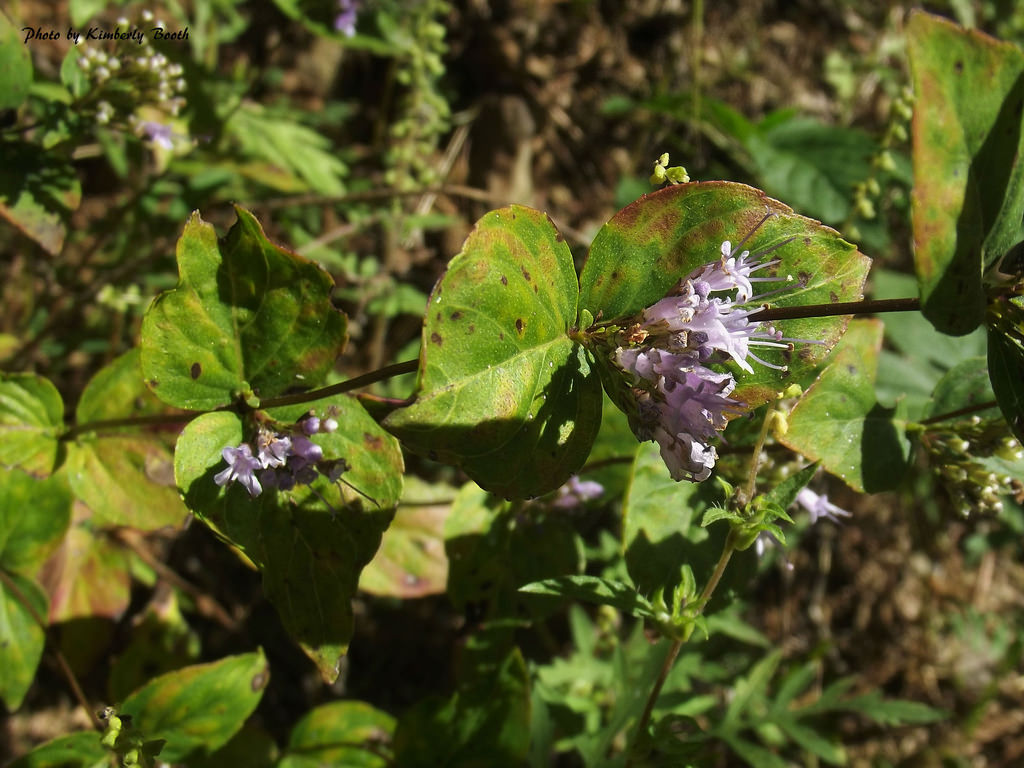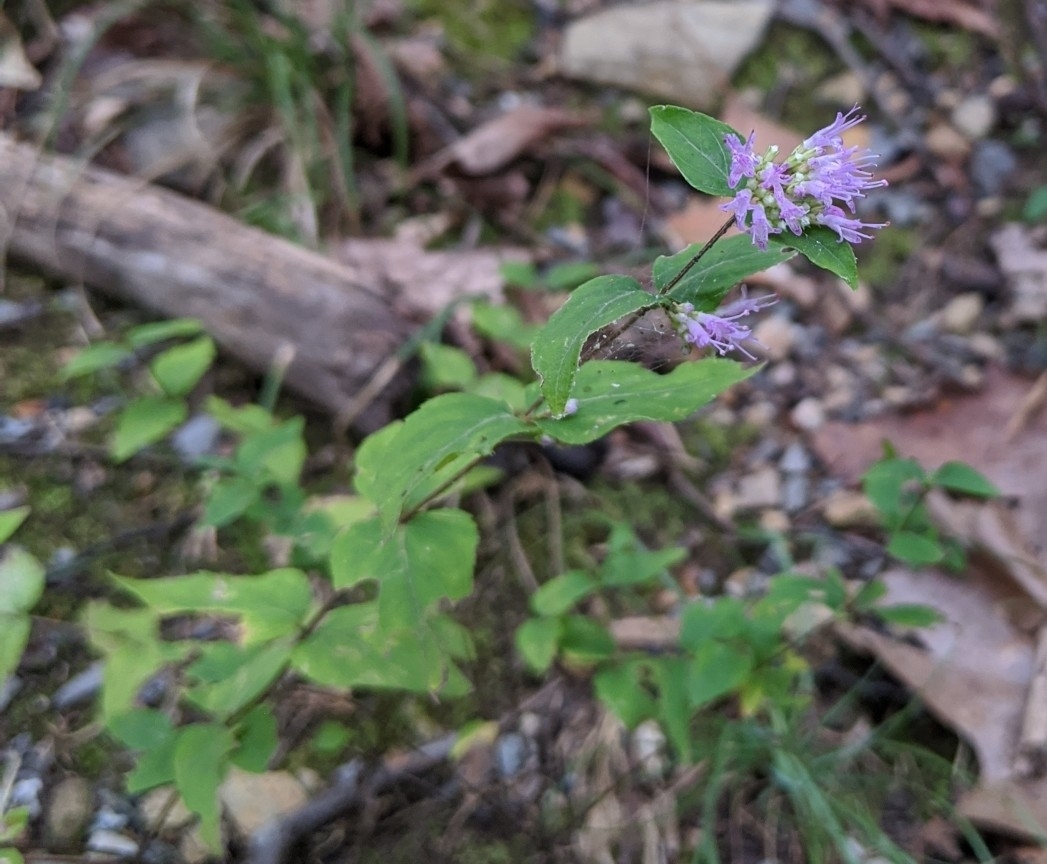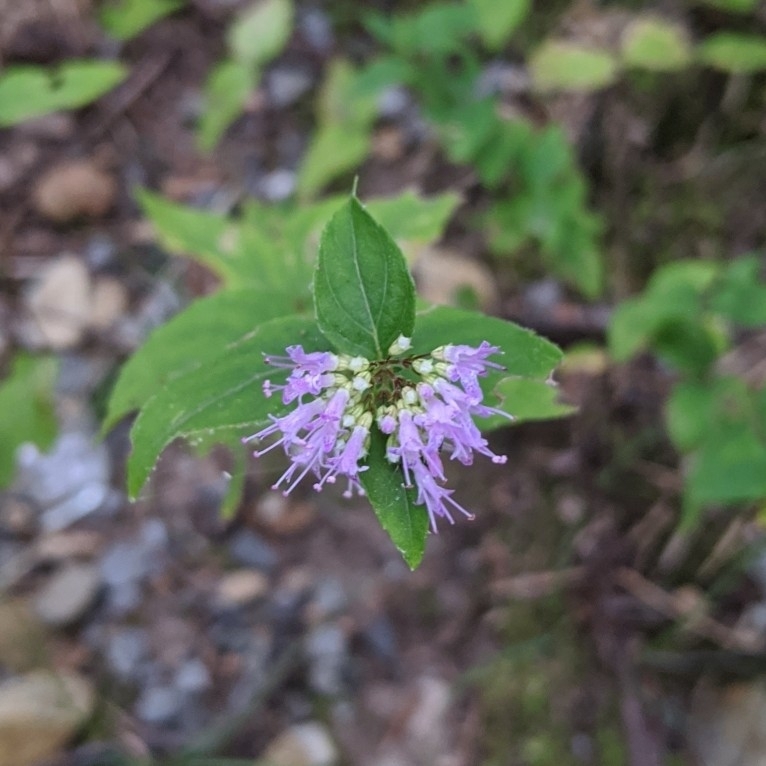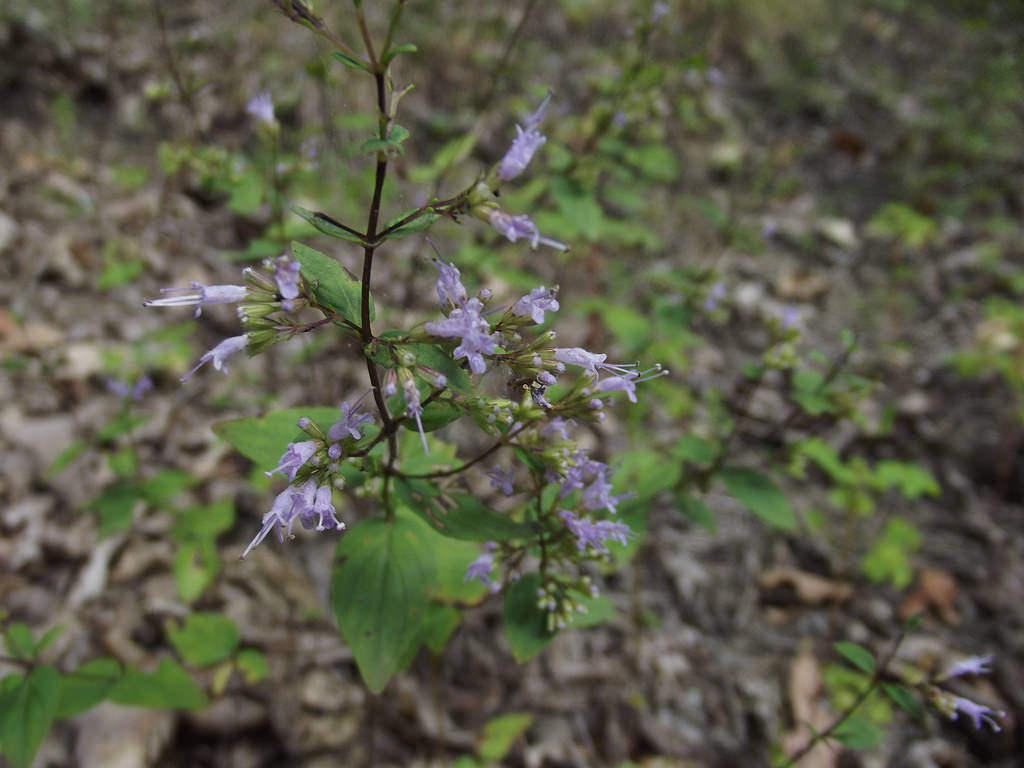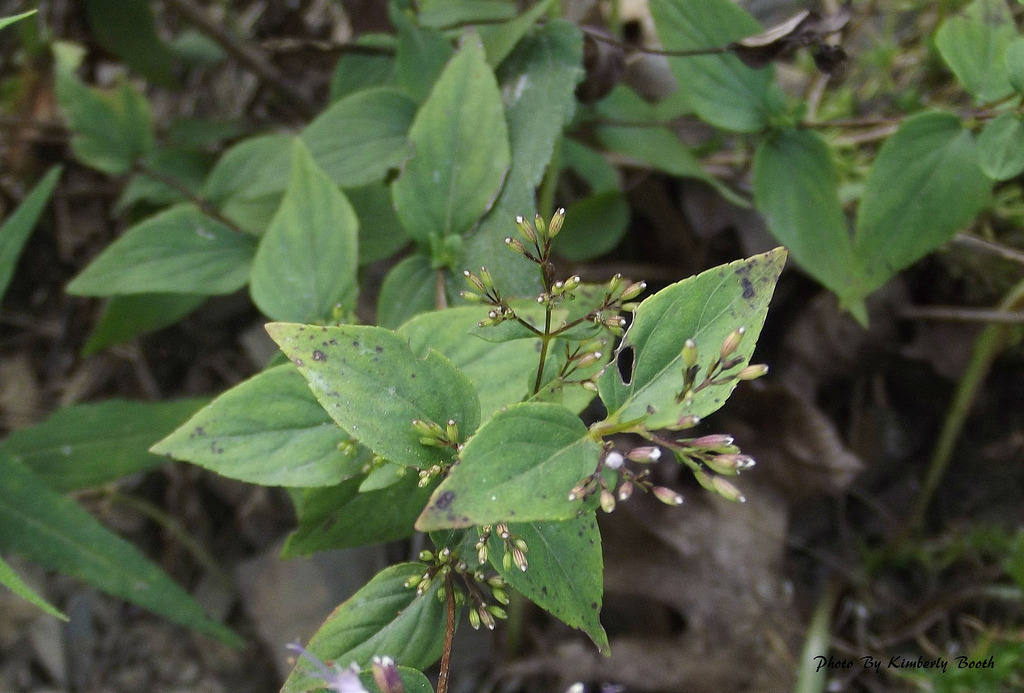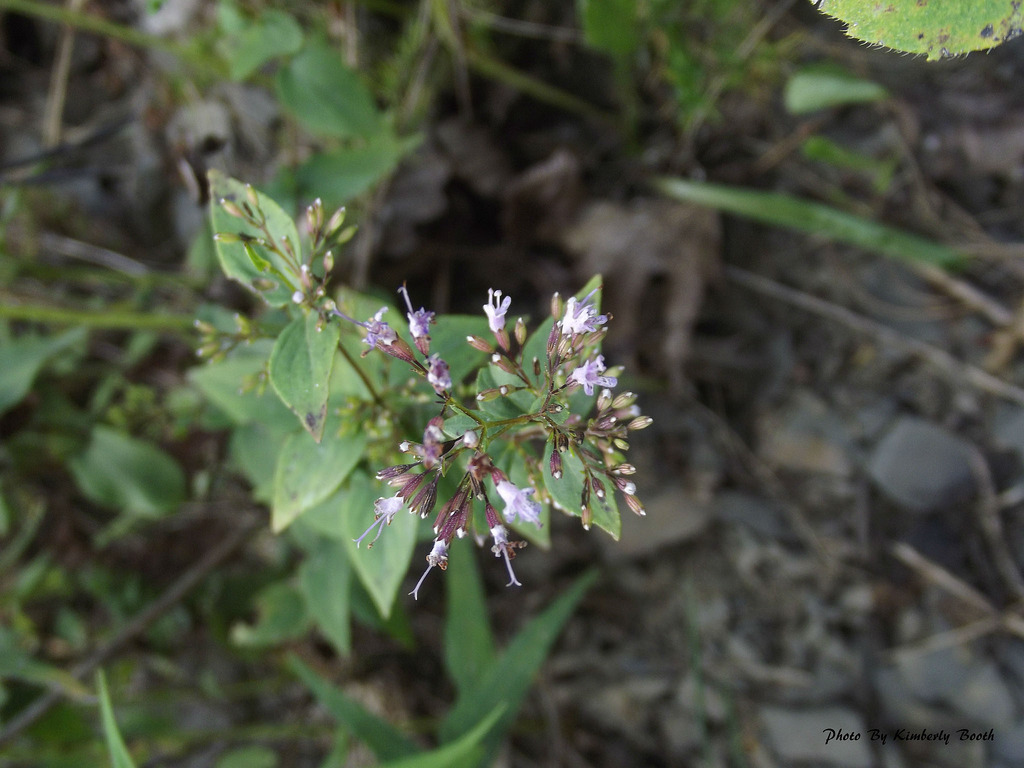Map Snapshot














154 Records
Status
Common Dittany is a sub-shrub native to the northern and eastern United States. It is found especially in dry forests and around rock outcrops.
Description
This plant has a wiry stem and blooms in late summer.
Seasonality Snapshot
Source: Wikipedia
| Cunila origanoides | |
|---|---|

| |
| Scientific classification | |
| Kingdom: | Plantae |
| Clade: | Tracheophytes |
| Clade: | Angiosperms |
| Clade: | Eudicots |
| Clade: | Asterids |
| Order: | Lamiales |
| Family: | Lamiaceae |
| Genus: | Cunila |
| Species: | C. origanoides
|
| Binomial name | |
| Cunila origanoides | |
| Synonyms[2] | |
| |
Cunila origanoides, with the common names stone mint, frost mint, dittany, and American dittany,[3] is a perennial late-summer-flowering subshrub with small purple flowers that is native to the central and eastern United States.[4] It belongs to the Lamiaceae (mint) family and is the only species in the Cunila genus native to the United States.[5] It grows in habitats such as dry forests and the thin soil around rock outcrops.[6] This species has historically been cultivated for use as a medicinal herb, tea, and ornamental plant.
Description
[edit]Cunila origanoides is a low, shrublike plant with square, stiff, branching stems, growing 15–46 cm (0.5–1.5 ft) tall. In the spring, the stems are purple, turning red when the plant is in bloom, then brown and woody in the fall. Leaves are opposite and measure 2–4 cm (0.7–1.5 in) long. They are sessile or have very short petioles. They are lanceolate, ovate, or ovate-cordate, with finely toothed margins. When crushed, the leaves give off a strong mint aroma.[7][8]

Small purple or lavender flowers, measuring up to 0.8 cm (0.3 in) long, appear in clusters of cymes at the end of branches. The flowers are tubular with 4 flared lobes. The 2 stamens and the style are twice as long as the corolla and stick out noticeably.[7]
Distribution and habitat
[edit]The plant is native in the United States from Texas to the west and south, Illinois and New York to the north, and North Carolina to the east.[4] It is found in dry areas in upland rocky woodlands, rocky slopes and ridges, and semi-shaded areas of sandstone cliffs.[8]
Ecology
[edit]The plant blooms in the late summer and fall, and butterflies, bees, and other insects are attracted to the flowers.[7] It is a host plant for the moth Stephensia cunilae.[9] C. origanoides is one of the few plants that are known to produce frost flowers.[10]
Uses
[edit]The leaves of C. origanoides, either fresh or dried, have been used for making tea with a pleasant, mint flavor. The tea can also be used for headaches, colds, and fevers, as well as for inducing menstruation and perspiration. Cunila oil, an essential oil, can be used as an antiseptic, aromatic and stimulant.[11]
References
[edit]- ^ "NatureServe Explorer 2.0". explorer.natureserve.org.
- ^ "The Plant List: A Working List of All Plant Species". Retrieved 24 June 2015.
- ^ "Cunila origanoides". Germplasm Resources Information Network. Agricultural Research Service, United States Department of Agriculture. Retrieved 24 June 2015.
- ^ a b NRCS. "Cunila origanoides". PLANTS Database. United States Department of Agriculture (USDA). Retrieved 22 September 2018.
- ^ "2013 BONAP North American Plant Atlas. TaxonMaps". bonap.net.
- ^ Digital Atlas of the Virginia Flora
- ^ a b c "American Dittany (Cunila origanoides)". www.illinoiswildflowers.info.
- ^ a b "Know Your Natives – Dittany". Arkansas Native Plant Society. 31 December 2016.
- ^ "HOSTS - The Hostplants and Caterpillars Database at the Natural History Museum". www.nhm.ac.uk.
- ^ "Dittany". Missouri Department of Conservation.
- ^ "Cunila origanoides Stone Mint, Common dittany PFAF Plant Database". pfaf.org.
- Pink, A. (2004). Gardening for the Million. Project Gutenberg Literary Archive Foundation.
